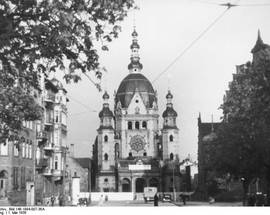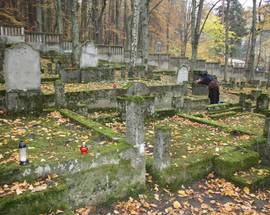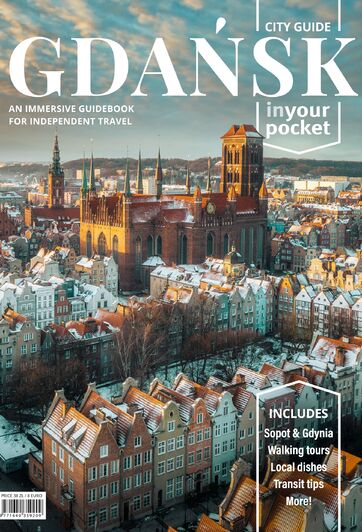Jewish Gdansk
more than a year agoDespite constant discrimination under both Polish and German rule, Gdańsk's Jewish population managed to build five separate communities just outside the city walls, complete with their own hospitals and schools. Slowly, Gdańsk's Jews gained more and more respect, reaching in the middle of the 19th century after their sudden and unexpected emancipation under Prussian rule an equal status, joining in with city affairs and getting involved in local government, merchant guilds and other organisations. By the time of the completion of the Great Synagogue in 1887, the majority of the city's relatively small Jewish population were employed in various professions, among them shopkeepers, traders, artisans, doctors, lawyers and teachers. Unlike in many other city's in the region, Gdańsk produced few great manufacturers or bankers. When WWI broke out in 1914, the city's Jews were integrated to such an extent that many were overcome with a sense of patriotic duty and fought alongside the Germans. A monument to Jews who lost their lives during WWI can be found in the Jewish Cemetery in Sopot. In the short period of time between the Armistice and the Holocaust, the city's Jewish population was enriched by refugees from Eastern Europe who played many important roles in the city's development (during this period over 30% of the city's lawyers were Jewish).
Of today's tiny population of 150 or so Gdańsk Jews, not one is descended from a pre-war Jewish Gdańsk family. The Jewish community based in the city's New Synagogue who support them are currently working on the promotion of the few remaining Jewish Gdańsk sights. Little remains to be seen of the city's former Jewish past.
11th century The first Jews (merchants) in arrive in Gdańsk.
1308 - 1400 The Teutonic Knights ban Jews from living in Gdańsk.
1454 Gdańsk is incorporated into the Polish state. Jews from Lithuania and further afield arrive and are employed as mediators in the trading of grains between the Polish nobility and the German city authorities.
1616 Five hundred Jews are recorded as living in Gdańsk.
18th century Two Jewish printing houses are founded.
1773 After the first partition Frederic II divides Jews into two groups of privileged and non-privileged Jews, the so-called General Privilege. The former are allowed to buy Gdańsk citizenship, whilst the latter are only allowed inside the main city walls under the 'care' of a privileged Jew.
19th century The Napoleonic Wars force many Jews to flee the city. The Prussians grant the Jews civil rights in exchange for full assimilation on the condition they change their names.
1887 Opening of the Great Synagogue. Many Jews now form part of the city's intellectual elite.
1929 Gdańsk Jews number 1,562.
1937 - 1938 The German pogroms begin. Jews are banned from public baths, their companies are taken over and they are openly attacked. Later they are banned from theatres, cinemas and hotels and are prohibited from working as doctors, lawyers and notaries.
November 12-13, 1938 Crystal Night (kristallnacht) events in the city include the destruction of most of the city's synagogues. Jews are banned from Sopot entirely.
September 1939 A total of 1,200 Jews are left in the city.
WWII Small ghettos set up around town, including one for 600 people inside the granary at ul. Owsiana. Others were taken directly to Stutthof, camps in Kashubia, or Auschwitz.
1945 At the end of WWII there were 350 Jews recorded living in the Tri-city area.
1958 A new Jewish community of 150 people is set up.
1990 - 1991 The Jewish Community in the Wrzeszcz Synagogue is established.






Comments